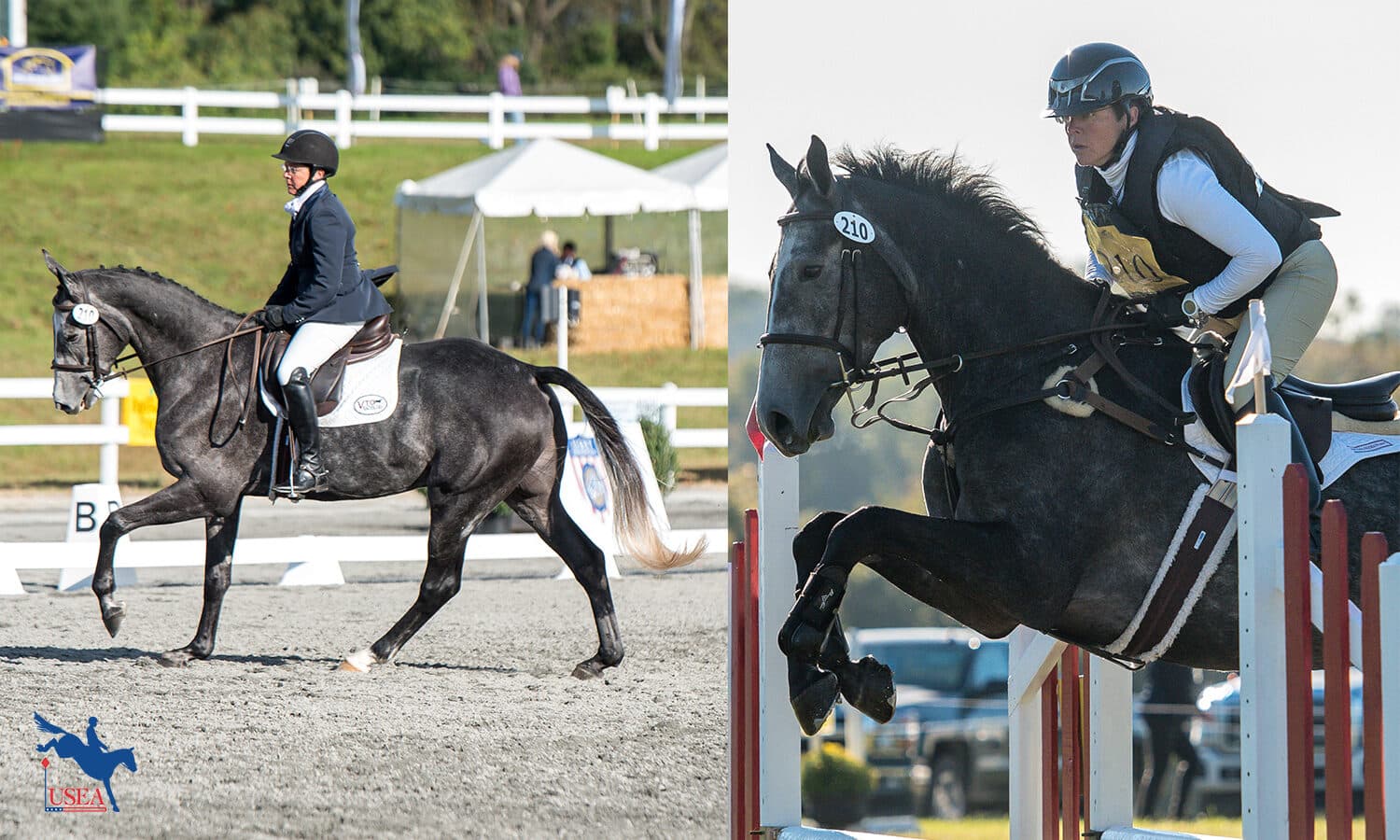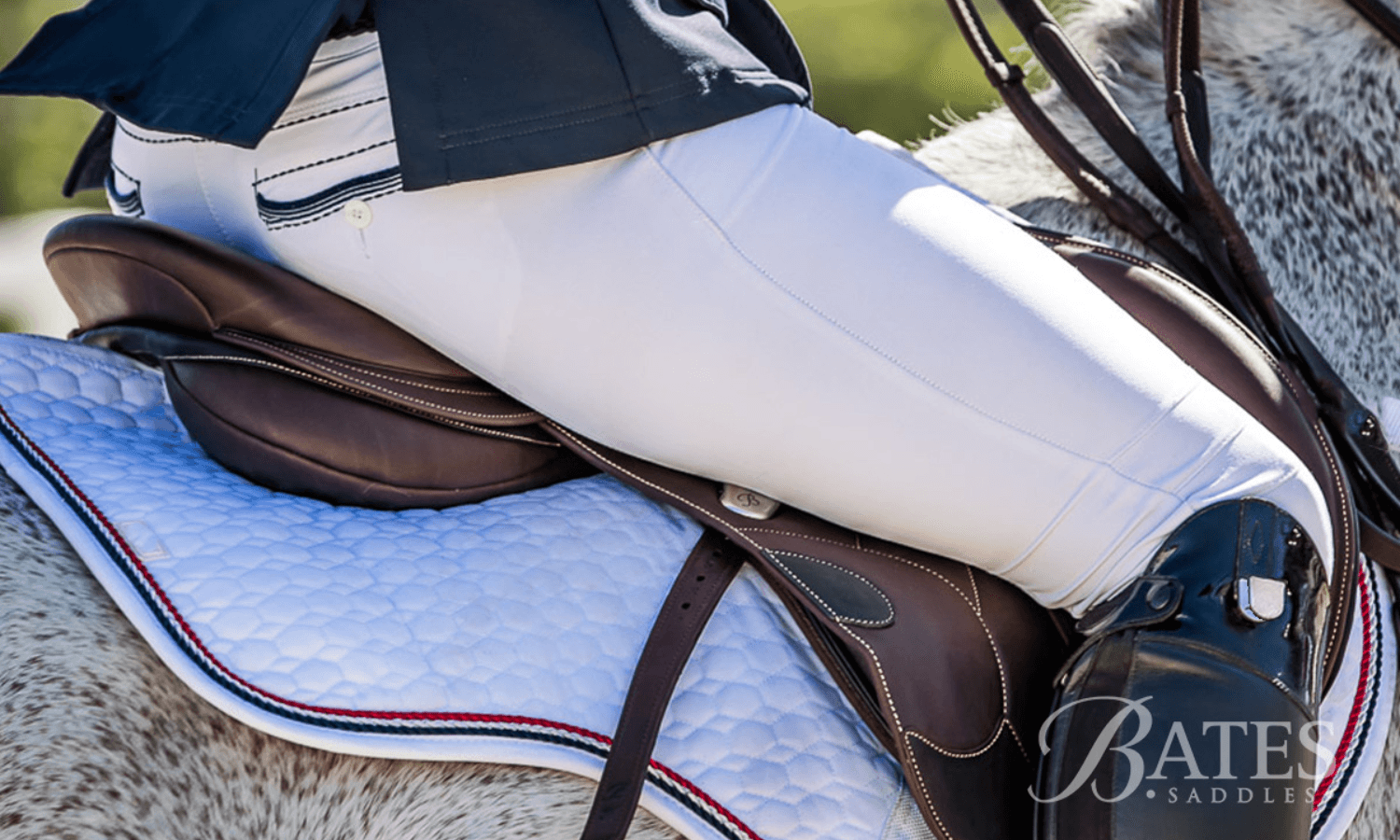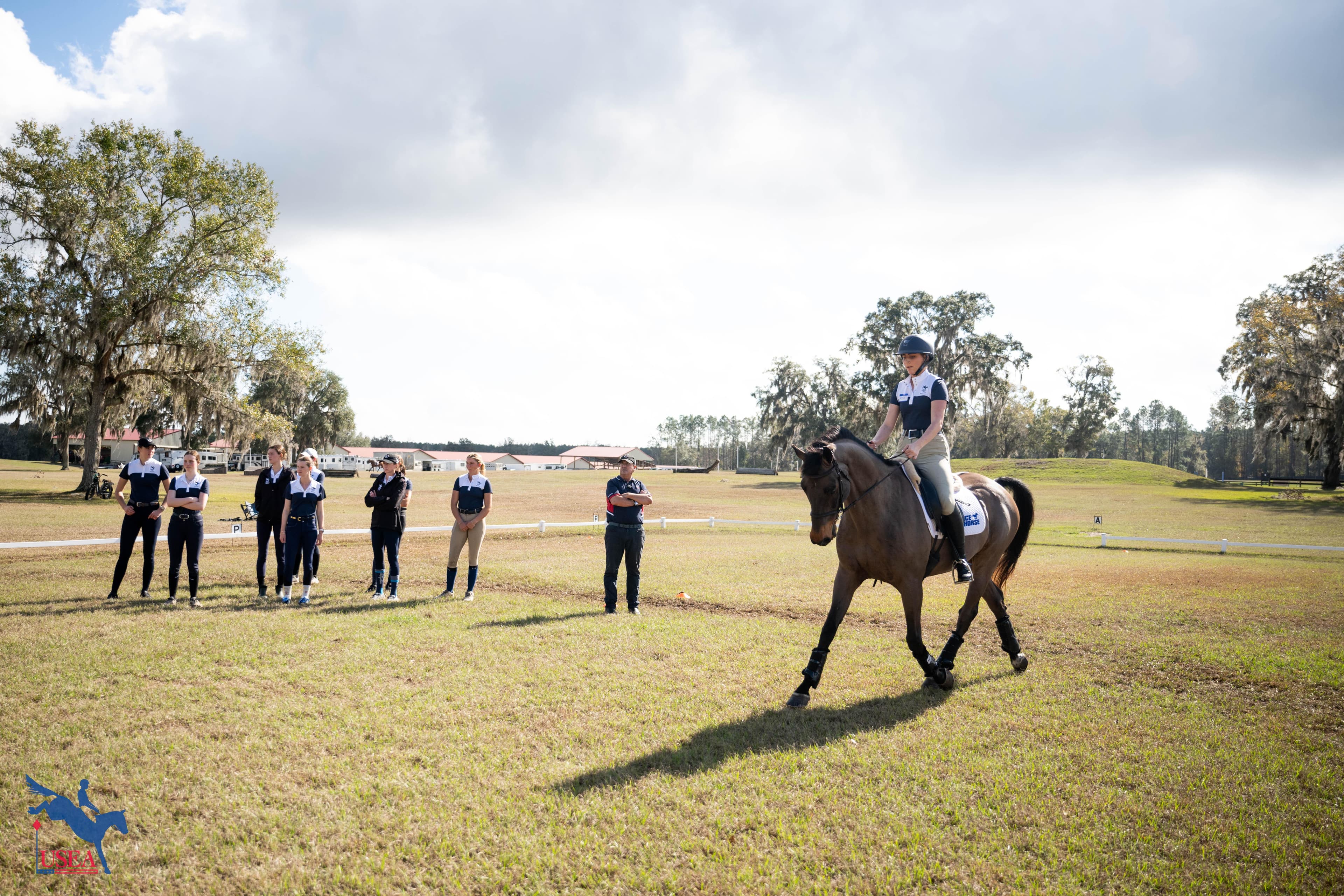Rule Refresher: Rules for Eventing Tests

Eventing tests were created to offer a low-key and inviting introduction to the sport of eventing. Eventing tests typically consist of one or more of the three eventing phases – dressage, cross-country, and show jumping – and are designed to prepare competitors, horses, and officials for USEA recognized horse trials. Eventing tests can also be a hybrid version of two phases like the Young Event Horse classes or DX Eventing and can be held as a standalone event or in conjunction with a recognized horse trials. Organizers typically use the USEF Rules for Eventing as guidelines when conducting eventing tests of any kind.
Several examples of eventing tests include Young Event Horse, Future Event Horse, New Event Horse competitions, combined tests, cross-country test, coaching-allowed test, dressage fix-a-test, and Intro or Starter level horse trials. For more information on the different eventing tests offered by the USEA, click here.
Text has been taken directly from the USEF Rules for Eventing with emphasis added by the USEA.
Subchapter EV 2 - Rules for Tests
EV122 Introduction
- DEFINITION. Tests consist of one or more dressage, cross-country, or jumping competitions. They are designed to introduce the discipline and to prepare competitors and horses for horse trials. They provide experience for participants within an enjoyable day of competition. These competitions may include:
a. Cross-Country Tests
b. Combined Tests
c. Starter Event Rider Tests
d. Eventing Equitation Tests
e. Young Event Horse Tests - ORGANIZATION. Tests may be offered as separate competitions or may be organized in conjunction with a horse trials or an event. They usually take place on one day.
EV123 Rules for Tests
- PARTICIPATION. A horse may be ridden by more than one competitor. A competitor may ride more than one horse. The number of horses that a competitor may ride may be limited by the organizer. The number of times that a horse may compete may be limited by the organizer.
- LICENSED OFFICIALS. For competitions that do not require licensed judges (such as Cross-Country Tests), a Federation Licensed Eventing Technical Delegate is required. In such instances, the Technical Delegate assumes the responsibility of the Ground Jury. For competitions which include dressage and jumping (such as Combined Tests, Starter Event Rider Tests, Eventing Equitation Tests, or Young Event Horse Tests), a Federation Licensed Eventing Judge is required. This Judge shall act as the Ground Jury and shall perform the course evaluation functions of a technical delegate. Other judges may be Federation Licensed Judges, participants or graduates of the USEA Training Program, or knowledgeable horsemen.
- OTHER OFFICIALS. A veterinarian shall be present on the grounds during any cross-country or jumping competition. Qualified medical personnel (EV113.1) must be present during all competitions.
- TESTS. Flexibility is provided for the running of Tests. Tests may be judged in the normal manner, as minimum percentage classes, as clear round classes, on the honor system, purely on time or points, etc. Classification may be individual, pairs, or teams. Organizing Committees are encouraged to create attractive competitions, whether they use the Tests described below or create additional Tests.
EV124 Cross-Country Tests
Cross-Country Tests consist of distinct competitions involving various cross-country skills. The tests may include pace, taking your own line, following unknown course, top score competitions with obstacles of different values, clear round cross-country, etc. The conditions under which the Cross-Country Tests will be conducted will be printed in the prize list.
EV125 Combined Tests
Combined Tests consist of two distinct tests during which a competitor rides the same horse throughout. The tests may include two of the following—dressage, cross-country, jumping; or may include one discipline (such as cross-country) repeated twice under different conditions. Combined Tests will be conducted under guidelines published by the USEA.
EV126 Starter Event Rider Tests
Open to riders of any age who have never competed in a horse trial, on any horse. The test shall involve a short dressage test (30%), jumping 6 or 7 fences in an arena (30%), and galloping in the open over 3 or 4 fences (40%). The fences will not exceed 2’6”. Each competitor will be judged on position, seat, and effective use of aids. The competitor must ride the same horse throughout.
EV127 Eventing Equitation Tests
Open to riders 14 to 18 years of age, on any horse. The test shall involve a short dressage test (40%), and jumping approximately 10 cross-country-type obstacles not to exceed 3’7” (60%). The jumping may be in an arena or on a short cross-country course. Each competitor will be judged on position, seat, and effective use of aids. The competitor must ride the same horse throughout.
EV128 Young Event Horse Tests
Open to 4- and 5-year-old horses with any rider. The test shall involve a short dressage test, a jumping test that may involve cross-country obstacles of 8-12 fences up to 3’3” (4YO) or 3’7” (5YO) in height, and a final judging of horses shown in hand for conformation, suitability, and presence. The same competitor must ride or show the horse throughout.
Want to catch up on past rule refreshers? Visit the links below:
- Rule Refresher: Are You Entered in the Correct Division?
- Rule Refresher: Entering Events
- Rule Refresher: Exercise and Warm-Up
- Rule Refresher: Accidents and Injuries
- Rule Refresher: Dress, Equipment Edition
- Rule Refresher: Dress, Attire Edition
- Rule Refresher: Saddlery
- Rule Refresher: Disqualification
- Rule Refresher: Am I Qualified? (Appendix 3)
- Rule Refresher: Inquiries, Protests, and Appeals
- Rule Refresher: Mandatory Frangible Devices
- Rule Refresher: Permitted Equine Therapists
- Rule Refresher: Changes Effective December 1, 2018
- USEF Updates Rulebook with Extraordinary Rule Changes
- Rule Refresher: Qualifications for Horse Trials
- Rule Refresher: FEI Rule Changes for 2019














